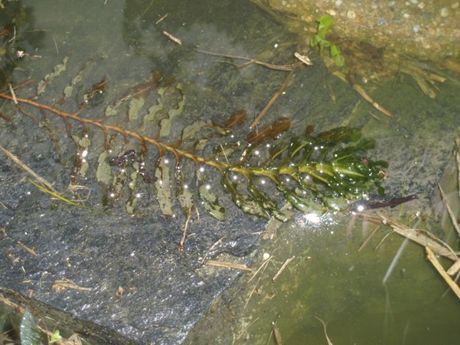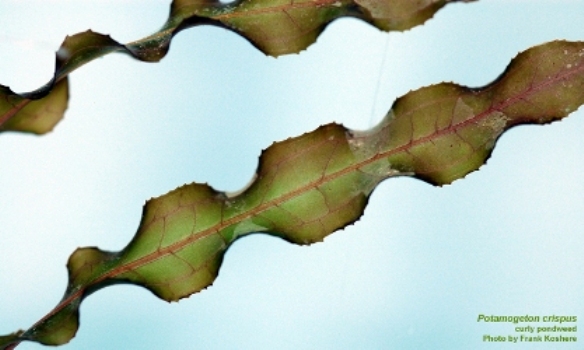Nifty Tricks that Help in Conquest (Adaptations)
Submerged macrophytes (or underwater plants) have had to overcome several obstacles to be successful. Some of the environmental factors that have played an enormous role in the relative fitness of these underwater plant species include light availability, water temperature, pH, and enhancing the uptake of carbon from the environment.
To maximize light uptake for use in photosynthesis, the leaves of curly leaf pondweed are only a few cells thick with thin membranes. The anatomy of this leaf aids in the diffusion of nutrients into the plant. Unlike terrestrial plants that have chloroplasts in the mesophyll of the leaves, the chloroplasts of curly leaf pondweed are often found in the epidermis. This helps to maximize the amount of sunlight that these submerged plants receive to use for photosynthesis!
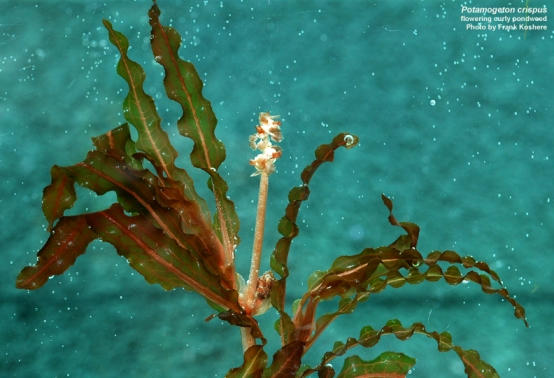
The metabolism of curly leaf pondweed
has an enormous plasticity; this organism can
survive in an incredible amount of environments! Although many pondweeds
and underwater plants die or become extremely reduced during
the winter, Potamogeton crispus has
grown in temperatures as low as 2 degrees Celsius
(35.6 degrees Fahrenheit). This incredible submerged
plant has been known to live in freshwaters with a
pH anywhere from 2 to 12. To accomplish this, transport mechanisms
that
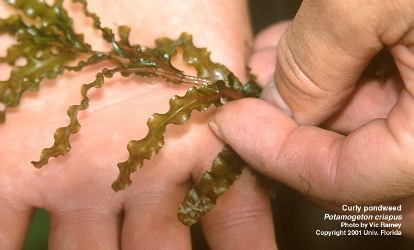 are responsible for pumping nutrients across
the cell membranes and into the cell co-transport
hydrogen ions to
maintain a healthy balance of pH
concentration within the plant! Also, the
photosynthetic organs of this plant are covered in a
dense, nutrient-rich solvent that helps
protect these vital components of the curly leaf
anatomy from extreme pH levels. Curly leaf pondweed
has also been found in several salt water lakes as
well!
are responsible for pumping nutrients across
the cell membranes and into the cell co-transport
hydrogen ions to
maintain a healthy balance of pH
concentration within the plant! Also, the
photosynthetic organs of this plant are covered in a
dense, nutrient-rich solvent that helps
protect these vital components of the curly leaf
anatomy from extreme pH levels. Curly leaf pondweed
has also been found in several salt water lakes as
well!
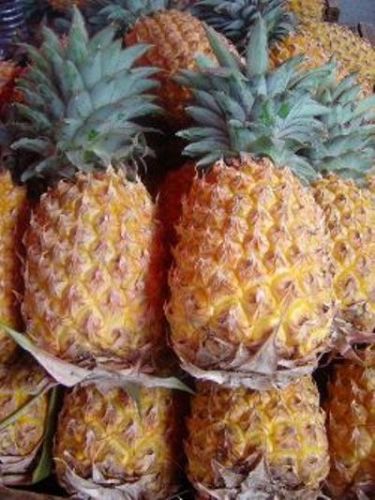
What does the tropical fruit
pictured to the right have in common with
curly leaf pondweed? Both organisms are considered
to be CAM plants! During photosynthesis, these
plants utilize different organic acids to break down
carbon dioxide in order to make essential sugars.
Curly leaf pondweed must also overcome the difficulty of obtaining carbon from the environment. Because of the density of water, submerged plants diffuse carbon dioxide at a much slower rate than plants above ground (about 100,000 times slower to be exact). To overcome this, the leaves of curly leaf pondweed often have no stomata. This helps to reduce the loss of important gasses like carbon dioxide, which is an essential molecule for photosynthesis. Amazingly, this incredible plant can also use bicarbonate ions in the water and soil as an additional carbon source for photosynthesis!
 So although we prefer to get our
carbon from super tasty food (like the pineapple
bacon cheeseburger pictured to the left), curly leaf
pondweed gets its carbon not only through carbon
dioxide, but through bicarbonate ions and other
minerals absorbed from the soil!
So although we prefer to get our
carbon from super tasty food (like the pineapple
bacon cheeseburger pictured to the left), curly leaf
pondweed gets its carbon not only through carbon
dioxide, but through bicarbonate ions and other
minerals absorbed from the soil!
"WOW! That pineapple bacon cheeseburger is making me hungry! My growling stomach makes me want to think about how curly leaf pondweed's nutrition works!" Continue on to NUTRITION!
